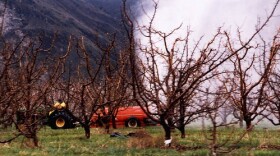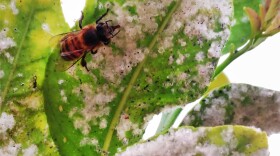-
(Runtime 0:60)Although pesticides can rid your home of cockroaches or farm fields of unwanted insects, they also can harm fish and potentially even…
-
These clumsy-flying beetles especially love roses, hops, wine and juice grapes – they even like cherries. Now, the invasive Japanese beetles – smaller…
-
Un nuevo estudio muestra que las personas de color, los indígenas y las comunidades de bajos ingresos, son más propensas a ser afectadas por los…
-
There’s a new tool to prevent pesticide exposure and illness among Latinx farmworkers. The University of Washington created the app, “Pesticide Labels, Now!’ to address language barriers on technical labels written in English.
-
Washington regulators must soon consider rules to limit the use of a controversial pesticide that can cause neurological and health problems, especially in young children. A bill passed by state lawmakers this session didn’t outright ban the pesticide, as health and farmworker activists had proposed.
-
A new study is just the latest evidence that a family of pesticides called neonicotinoids, sometimes just called "neonics," can pose risks to the insect world that are not fully understood.
-
After almost 10 months of waiting, residents of Joseph, Oregon, can feel more confident drinking their water and swimming in nearby Wallowa Lake, according to lab test results released Thursday.
-
Of the 70,000 acres of mudflats in Willapa Bay, less than 10,000 acres are used for shellfish cultivation. Researchers estimate about a quarter of that farmable land has already been taken over by burrowing shrimp. But the battle over land between shellfish growers and the shrimp is not entirely new.
-
The chemical’s especially dangerous for babies and small children because it can have lasting neurological effects. Chlorpyrifos can blow from orchards into nearby houses; parents who work in orchards can transport the chemical home on their clothes and in their cars; and chlorpyrifos can make its way into developing fetuses through umbilical cord blood.
-
Oregon has adopted new rules to protect farmworkers from pesticides. The new regulations establish zones around pesticide applications that workers cannot enter. It also allows workers the choice to take shelter in housing or other structures instead of moving away.
Play Live Radio
Next Up:
0:00
0:00
Available On Air Stations









